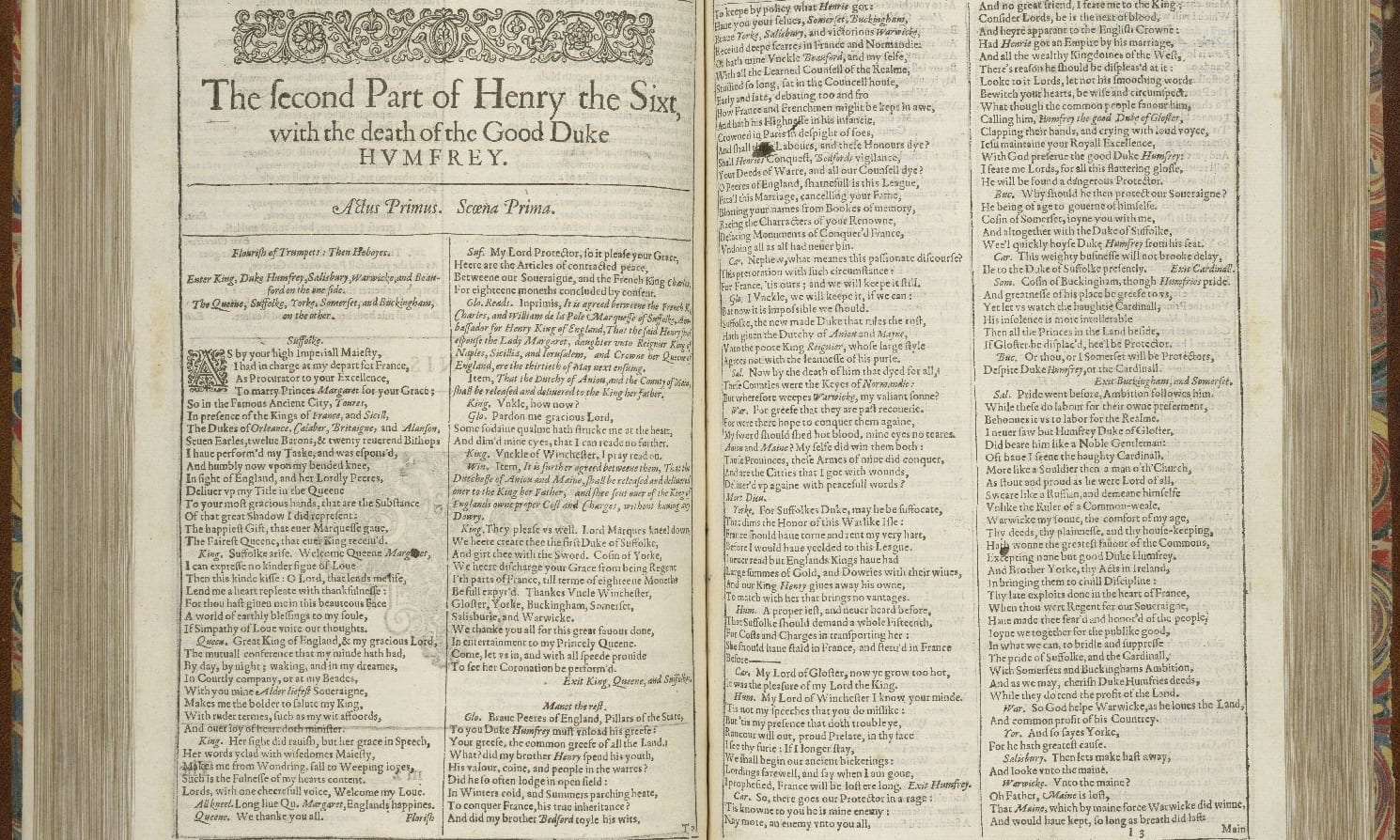Henry VI, Part I, seems to start in the same vein as Part I. The King marries Margaret of Anjou. The Duke of Gloucester’s wife dreams of usurping power, and partakes in a bit of witchcraft. Suffolk and his allies decide that Gloucester has more power than them and so should be got rid of. All in all, more of the same scheming.
Yet the machinations of court steadily become more overt, with Gloucester murdered and York instigating a rebellion lead by Jack Cade to weaken the King. This provides York the excuse to bring his army (which has been off stage in Ireland) to England on the classic pretence of protecting the King, yet ends up publicly claiming the throne and so this part ends in the long-awaited battle of St. Albans.
Even without the edits of a modern adaptation, the play contracts time so it seems as if Cade’s rebellion, York being off in Ireland, and the battle at St Albans all happens in one stream of constant action. In this way, this part does not have the same finely wrought tension of Part I, and instead has a sense of the inevitable battle pressing ever closer.
That sense of urgency and an unavoidable ending is used well. However, Shakespeare’s contraction of time for dramatic effect is not quite as skillfully done as in some of his other histories, such as Julius Caesar. There is also a subplot – for want of a better term – in which Gloucester’s wife dabbles in necromancy, is caught and subsequently exiled. This works well plot-wise, but the scene in which the spirit is raised seems like an embryonic version of the Witches’ scene in Macbeth.
One of the best adaptations of Henry VI is the 1963 televised retelling of the first historical tetralogy directed by John Barton and Peter Hall, titled The Wars of the Roses. Hall had no issue with making drastic changes, including reconfiguring the three parts of Henry VI into two plays by splitting the second part and adding half of it to parts I and III, which were also slightly shortened. It also interestingly gives considerable weight to the character of Margaret of Anjou, whose lines are often cut down in other adaptations for the sake of brevity.
The second part of Henry VI has a sense of unpractised potential to it. Hall went so far as to justify some rather drastic editing and reworking of parts of Henry VI on the basis that “there is a difference between interfering with the text of the mature Shakespeare and with the text of the Henry VI’s.” While you may hesitate in going as far as he does, labeling the play as “apprentice work,” it is less of a stretch to agree that it is uneven in quality.
This slightly unfinished nature is most apparent in Part II as it lacks the tension building nature of Part I or the violent shock factor of Part III. However, the almost precipitous plotting, with the audience always knowing a battle is inevitable, makes Part II an enjoyable play. Just because it shows some aspects that Shakespeare went on to perfect, and is not the best of the parts, does not mean it is unworthy of attention.
Words by Ed Bedford.
Support The Indiependent
We’re trying to raise £200 a month to help cover our operational costs. This includes our ‘Writer of the Month’ awards, where we recognise the amazing work produced by our contributor team. If you’ve enjoyed reading our site, we’d really appreciate it if you could donate to The Indiependent. Whether you can give £1 or £10, you’d be making a huge difference to our small team.
Image: Folger Shakespeare Library Digital Image Collection
